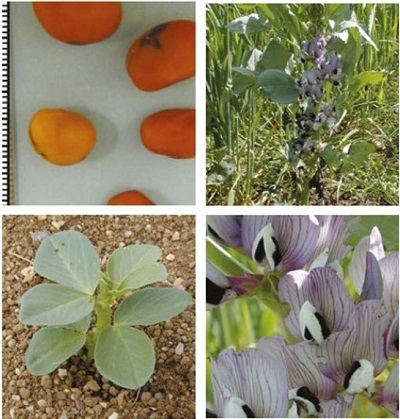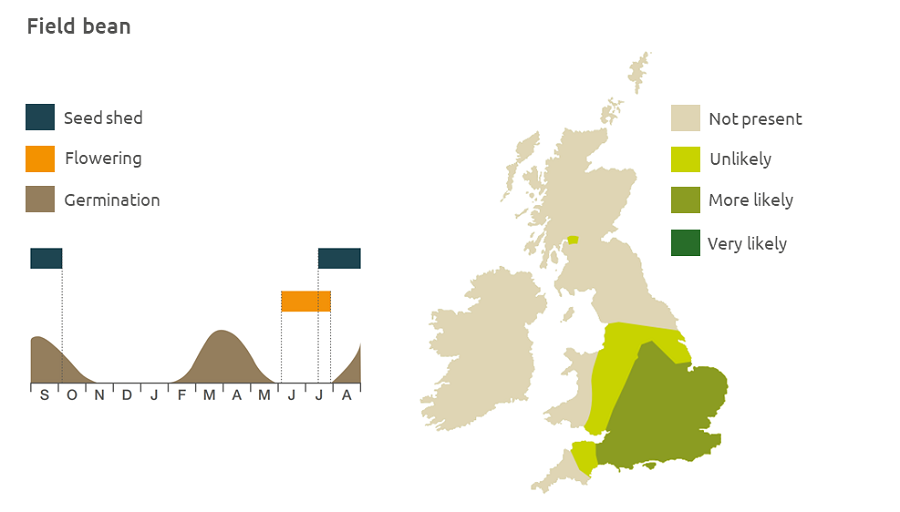- Home
- Knowledge library
- Distribution and biology of field bean as a volunteer weed in the UK
Distribution and biology of field bean as a volunteer weed in the UK
Field bean occurs as a volunteer weed in arable fields. Find out how to identify and control it.
Overview
Field bean (Vicia faba) is found as a volunteer in arable fields as a result of previous cropping. It does not persist for long in the seedbank if controlled in the crop. Field bean may germinate in autumn and overwinter. It grows best in moist cool conditions.
- It is particularly competitive in winter wheat
Description
It is a robust annual dicotyledon, blue green in colour, growing to 2 m with two or more stems from the base. The leaves are divided into six large oval leaflets. Flowers are like those of a pea with 5 or more growing in clusters in the leaf axils.
Key features
Young plant: It is very sturdy with no visible cotyledons.

Location and life cycle

Geographic distribution
Field bean is found in lowland areas in the midlands and south of England and southern Scotland, as a volunteer in arable fields, as a result of previous cropping.
Soil type
It can grow on any soil type but prefers cultivated rich loams.
Seed statistics
- Seed weight: 550 mg
Management
Delaying cultivation allows predation of seeds on the soil surface.
For advice on herbicides, please speak with your agronomist or adviser.
When was this information last updated?
This page is based on content from the encyclopaedia of arable weeds publication. Since it was first released in 2008, the publication has been redesigned several times but not revised. However, it remains a good foundation for general information on the distribution and biology of weeds.

